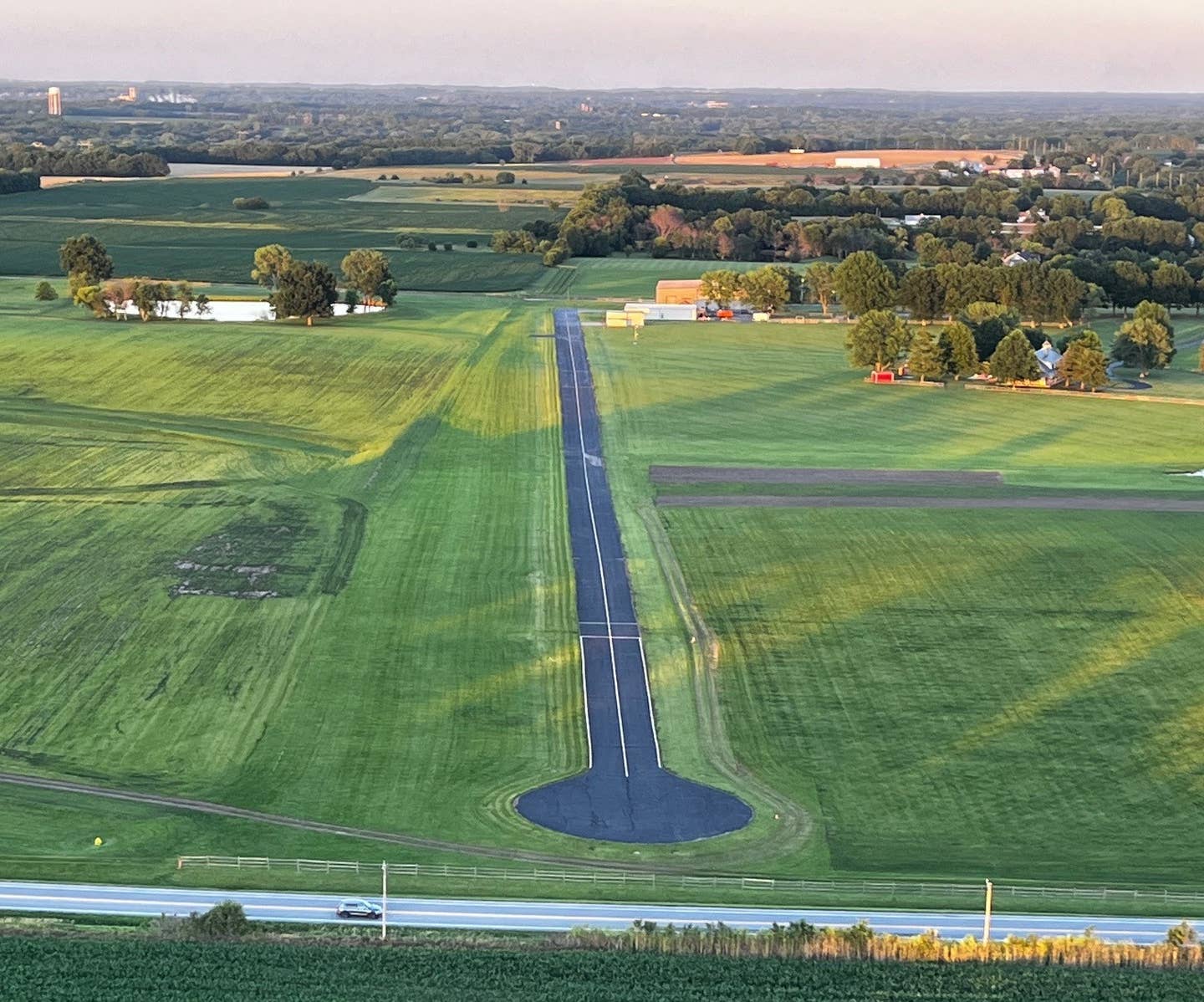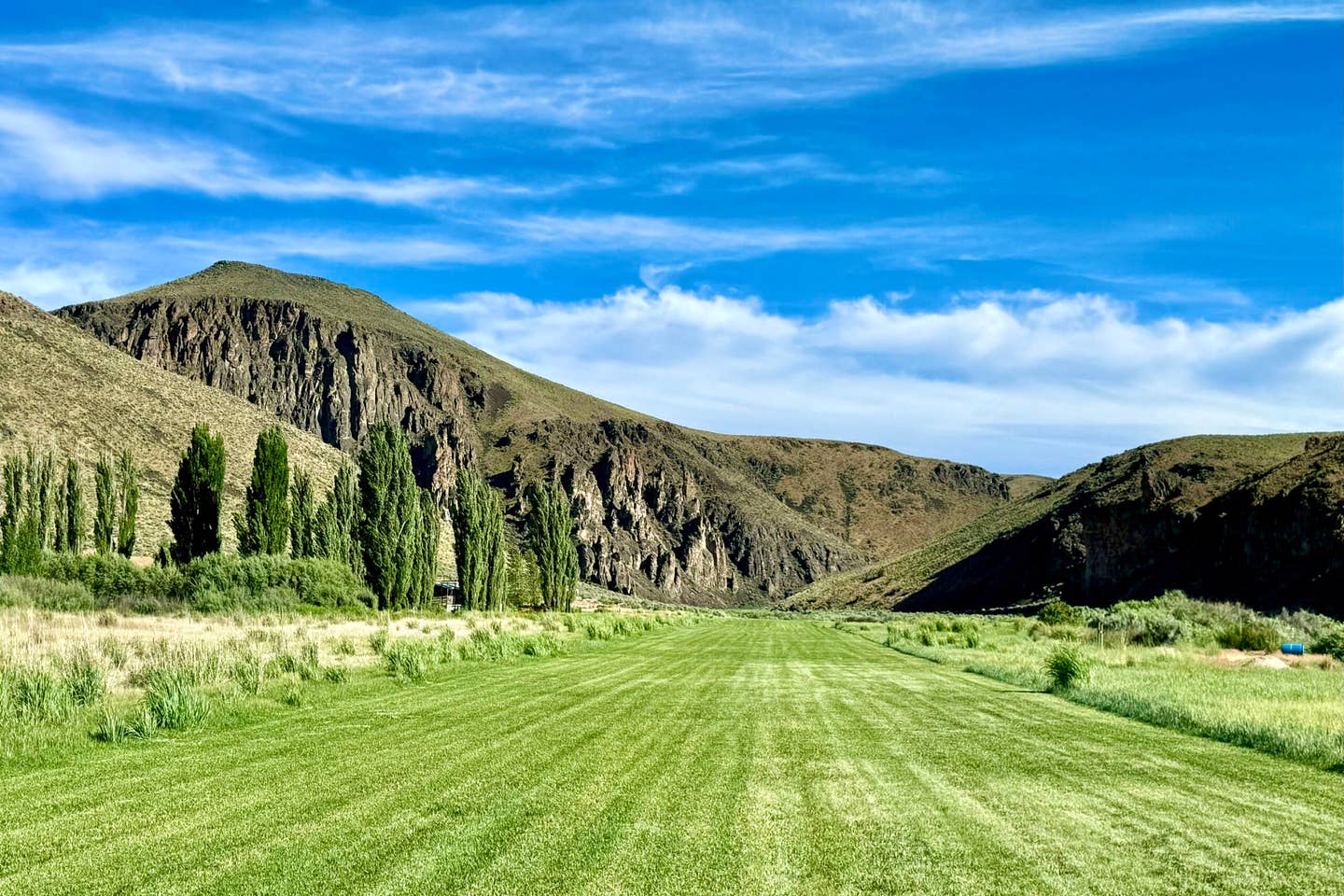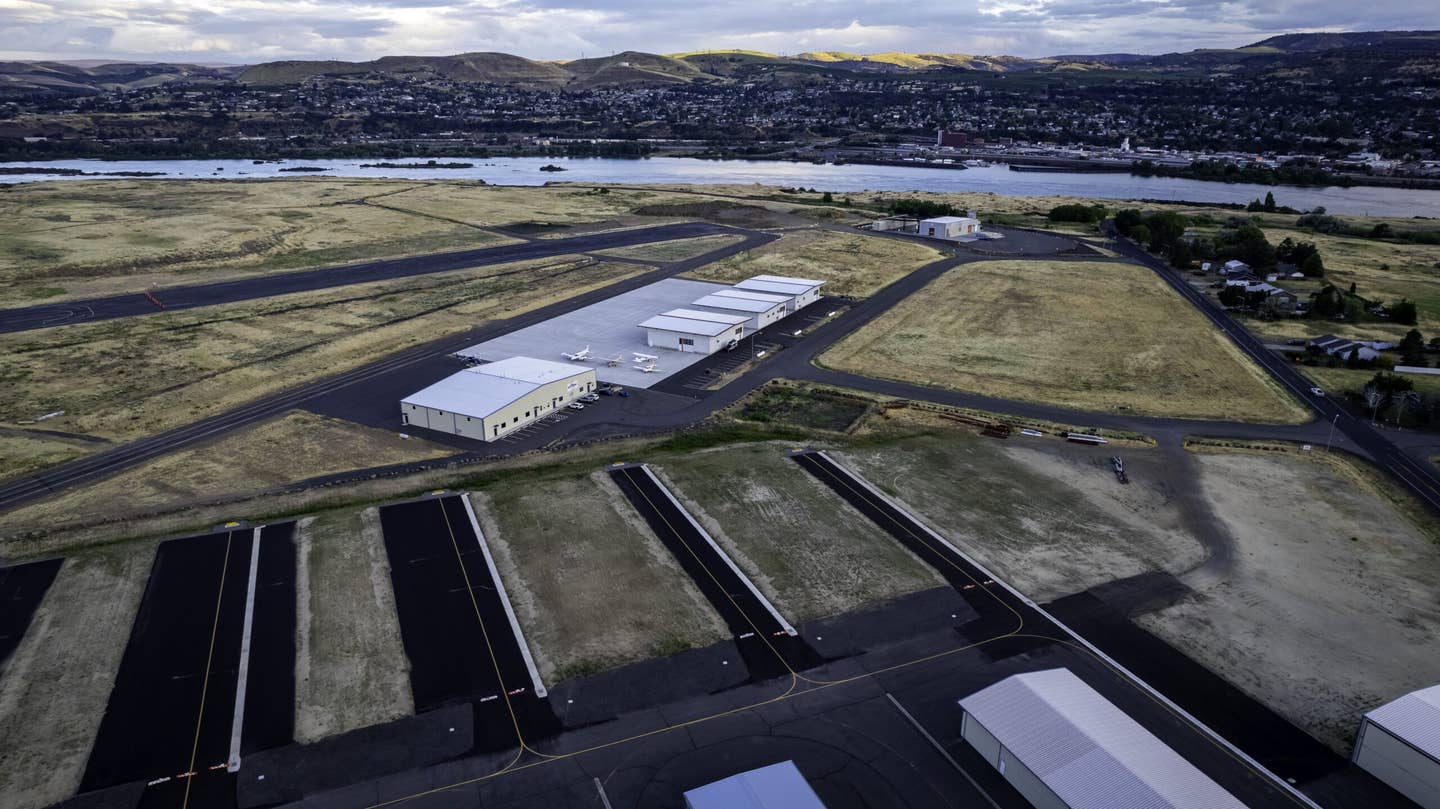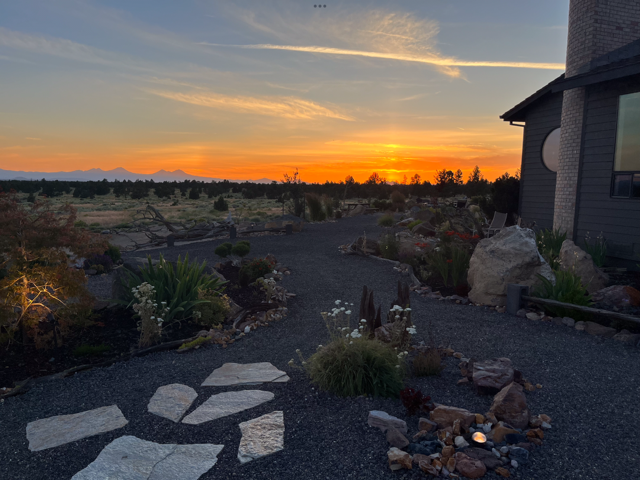Destinations: Martha’s Vineyard
The location offers no shortage of airports, history, or things to do.
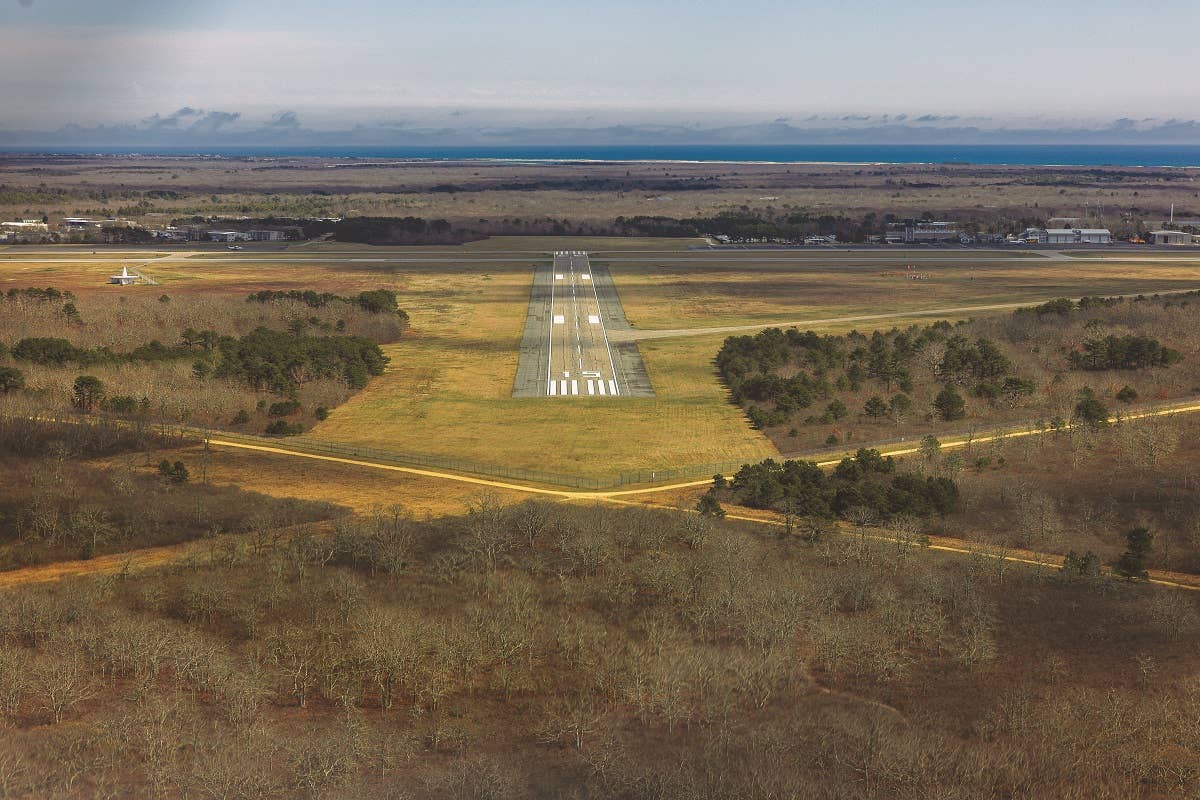
On approach to Martha’s Vineyard. [Stephen Yeates]
Martha’s Vineyard, Massachusetts, is one of those destinations that makes a great case for general aviation. Because it is an island, getting there by car involves a ferry ride that can be complicated, competitive, and time-consuming to arrange.
People who have summered on the Vineyard for generations often share tales of woe related to the ferry. Under the best conditions, the trip consumes much of the day.
By contrast, traveling to the island by airplane is remarkably quick and easy. From my home airport in Sussex, New Jersey (KFWN), the flight in our Commander 114B takes an hour and 20 minutes. Even on a Friday afternoon at the height of the summer vacation season, when it can seem impossible to get anywhere using surface transport, it is an easy transit by air.
If you're not already a subscriber, what are you waiting for? Subscribe today to get the issue as soon as it is released in either Print or Digital formats.
Subscribe NowChoosing An Airport
You might be surprised to find that a smallish island has three airports, but one could argue the Vineyard’s vast and varied aviation history is too much for one field to accommodate. Most visitors arrive at the modern Class D airport in Vineyard Haven (KMVY), which has scheduled airline and charter service, and a bright, airy terminal with ticket counters, baggage check, car rental desk and other services. There is also a restaurant called the Plane View. The Navy trained pilots here during World War II.
Runway 6/24 is 5,504 feet long and ideal for large turboprops and many light to midsize jets. Runway 15/33 is 3,327 feet long and crosses near the threshold of 24. As we approached over Long Island Sound, we heard other aircraft using Runway 6, but as we got closer the wind shifted to favor 15, and the tower controller offered us the option of the shorter runway with a direct headwind. This was a good deal that resulted in a longer, circling approach that gave me more time to descend and more space to stay clear of a clump of clouds hanging over the field just above pattern altitude.
After landing we taxied to an overnight tie-down area that kept us clear of the jet blast of the main ramp. This spot seemed far from the terminal, but that was not an issue because the ground crew person who guided us in and tied down the airplane also drove the shuttle van and dropped us off at the main building. If you want services, from radar service in the air to fuel service on the ground, KMVY is the right place. This is also a haven for plane spotters, especially during the summer season when the ramp hosts a parade of air-craft and people.
Katama Airpark (1B2) is in Edgartown, east southeast of Vineyard Haven and just outside the Class D. This is where much of the rest of the flying crowd goes, particularly longtime local pilots and those flying light, single-engine machinery that is well suited to Katama’s three turf runways, arranged in a neat triangle. You can just about always find a satisfactory headwind there. Perhaps you just prefer a nontowered field, or you find the cuisine at Katama Kitchen more to your liking. This also makes the best place to chat with fellow pilots.
Katama dates to the 1920s, when the airfield was carved out of pastureland, and still looks the part. Curtiss-Wright Flying Service was based there early on, followed by the Martha’s Vineyard Flying Club. The Navy set up a gunnery range there during World War II, and over the years visiting pilots used the field for air shows and demonstrations.
Trade Wind Airport (MA44) in Oak Bluffs is a 2,200-foot grass strip owned by the Martha’s Vineyard Land Bank Commission. Pilots must request permission via email before landing there. Each pilot can get permission for up to five aircraft, and the permit is good until the end of the year it is issued. I received permission for my Commander 114B and the flying club’s Cessna 172, which probably would perform better on the unimproved field. Trade Wind is strictly for short, day visits—no overnight parking.
For decades, Carolyn Cullen, a flight instructor and member of the legendary Women Airforce Service Pilots, or WASPs, owned and operated the airport. Cullen had learned to fly during the 1930s and became a pillar of the island’s aviation community. If you were lucky, perhaps you flew with her.
The Towns
Each town on the island expresses a distinct personality and appeal. On this trip we stayed in Oak Bluffs, a popular, bustling spot where many travelers, especially those staying just a day or two, tend to spend most of their time. This is where most of the Steamship Authority ferries from Hyannis, Woods Hole, and Nantucket arrive during the busy summer season. There are many restaurants, hotels, and stores to keep visitors from feeling isolated. It’s a party town.
Vineyard Haven, also known as Tisbury, sports a year-round ferry terminal and is the island’s largest port of entry for passengers and cargo, although Oak Bluffs is busier in the summer. This is where you find more local residents. Attractions include beaches, restaurants, and a healthy arts and music scene. Because Europeans settled here early on, the town’s architecture reflects a range of styles from Greek Revival to neoclassical.
Aquinnah sits on the rural western side of the island and formerly was known as Gay Head. The town is small, covering less than 6 square miles, and quiet. Aquinnah, the traditional name for the area used by the indigenous Wampanoag people for thousands of years, became the town’s official name in 1997 and has been used by all since. Visitors can learn more about the Wampanoag at the Aquinnah Cultural Center.
Chilmark lies just east of Aquinnah and is also off the beaten path. It includes the fishing village of Menemsha, known for its beautiful beach and delicious seafood. People also say the village offers the best sunset views on the island. The town is small and quiet, with a general store and post office—and not much else. It feels more like a remote getaway than busier more developed parts of the Vineyard.
Centrally located, West Tisbury connects the island’s north and south shores and marks the divide between the so-called up-island and down-island areas. It was part of Tisbury, or Vineyard Haven, before breaking away in 1892. This rural district is the agricultural hub of the Vineyard, where the Grange Hall still serves as a community center for farmers’ markets and other events. The town hosts an agricultural fair every August.
Edgartown is the island’s largest town based on population. The first European settlements were here, and the place was teeming with commercial activity during the peak of the whaling industry. Today it is known for South Beach, also known as Katama Beach, the island’s most popular. Edgartown is just one of two “wet” towns where hard liquor is sold in the Vineyard, along with Oak Bluffs. So Edgartown also is known for its nightlife.
The Lighthouses
The Vineyard seems to have plenty of most things—not just airports. Take lighthouses, for example. There are five on the island, each notable for its appearance, design, and history. I came away from this trip believing that visiting all of them arguably is the best way to get a feel for island culture.
Even if you are not a lighthouse enthusiast, it is easy to spot Gay Head Light as the most distant outlier in the group, as its red brick exterior contrasts with the others’ white paint. Built in 1844, it represented an improvement over the previous wooden version. The following decade it received a major boost in technology with the installation of a Fresnel lens with more than 1,000 prisms. The nearby cliffs give the structure’s perch a precarious look that is not an illusion. Indeed, the building was moved in 2015 to protect it from erosion.
The East Chop Lighthouse in Oak Bluffs is on the site where early telegraph development took place around 1828. A sea captain built the original lighthouse privately during the mid-1800s and charged fees to ships that arrived in port. The federal government bought the lighthouse in 1875 and replaced it with the current cast-iron building. It was known as the Chocolate Lighthouse because of its reddish brown color until 1988, when it was painted white.
West Chop Lighthouse was the last of the island’s lights to be operated by a keeper before automation took over. Today’s brick structure was built in 1838to replace an earlier wooden lighthouse. It has also been moved back from the edge of the bluffs following threats from raging seas and shifting ground.
The especially picturesque Edgartown Lighthouse was built in 1828 on a man-made island in the Edgartown harbor, and for a year or so after completion, the only way to reach it was by boat. Government funds eventually allowed for construction of a footbridge.
The Cape Poge Lighthouse—sometimes spelled “Cape Pogue”—is the most remote of the island’s lights, located at the northeast corner of Chappaquiddick Island. It also seems to have endured the roughest life. Built in 1801, it lasted until 1838, when it succumbed to destructive waves. Islanders rebuilt it, but over the next 50 years the sea wore it down. Another rebuild with a change from reflector lamps to revolving prisms lasted only until 1892. It was rebuilt and wrecked one more time before the current wooden structure was completed in 1922.
This is where lighthouses and aviation came together on the Vineyard. In the January 16, 1987, edition of the Vineyard Gazette, there is a wonderful photo of a Sikorsky S-64 Skycrane helicopter flying overhead with the Cape Poge Lighthouses hanging below, on its way to a new foundation. An accompanying article described the landmark scene:
“Dangling beneath a giant Army sky crane helicopter, guy wires flying like kite strings, for a brief moment the historic shingled lighthouse evoked memories of Dorothy’s house in the Wizard of Oz as it sailed through the air.”
- READ MORE: Destinations: Half Moon Bay
Martha’s Vineyard (KMVY)
Location: 3 miles south of Vineyard Haven or 41.5 nm southeast of Providence, Rhode Island.
Airport elevation: 66.9 feet msl
Airspace: Towered, Class D
Airport hours: Open 24 hours. Tower operates 0600-2200 May 15 to October 31; 0700-1700 November 1 to May 14
Runway: 6/24, 15/33
Lighted: Yes
Pattern altitude: 1,000 agl (light), 1,500 agl (large)
This column first appeared in the July 2023/Issue 939 print edition of FLYING.

Subscribe to Our Newsletter
Get the latest FLYING stories delivered directly to your inbox


